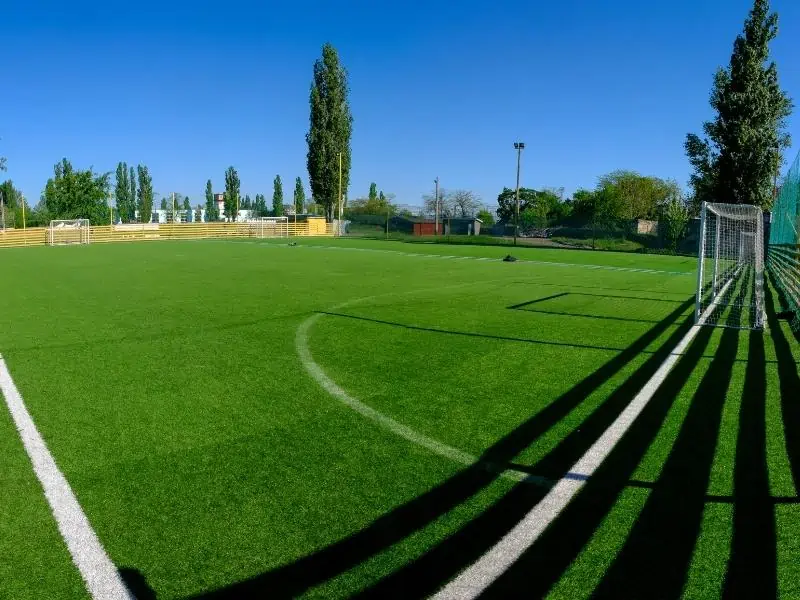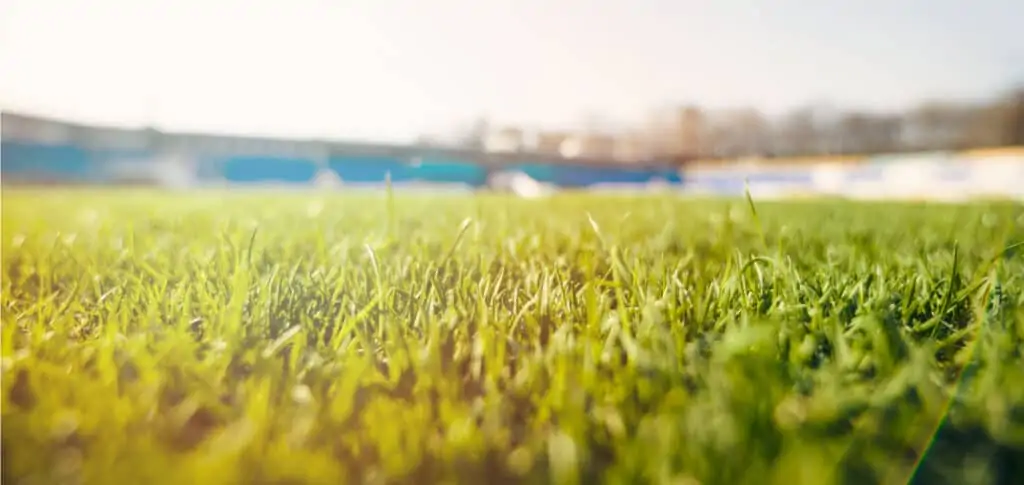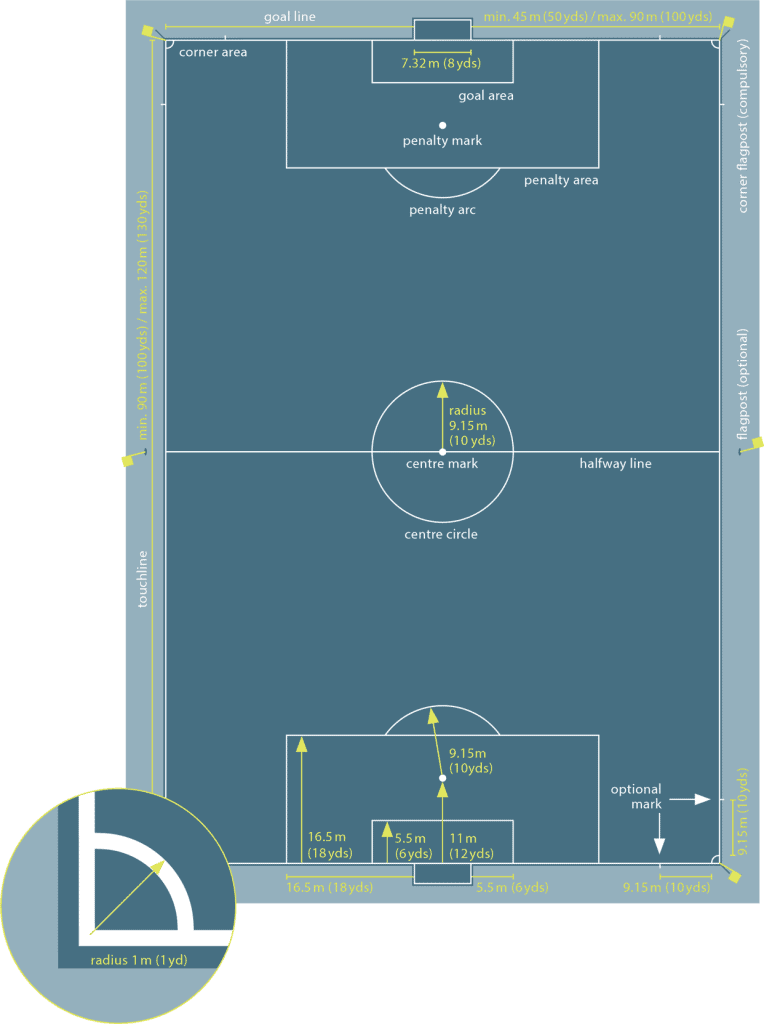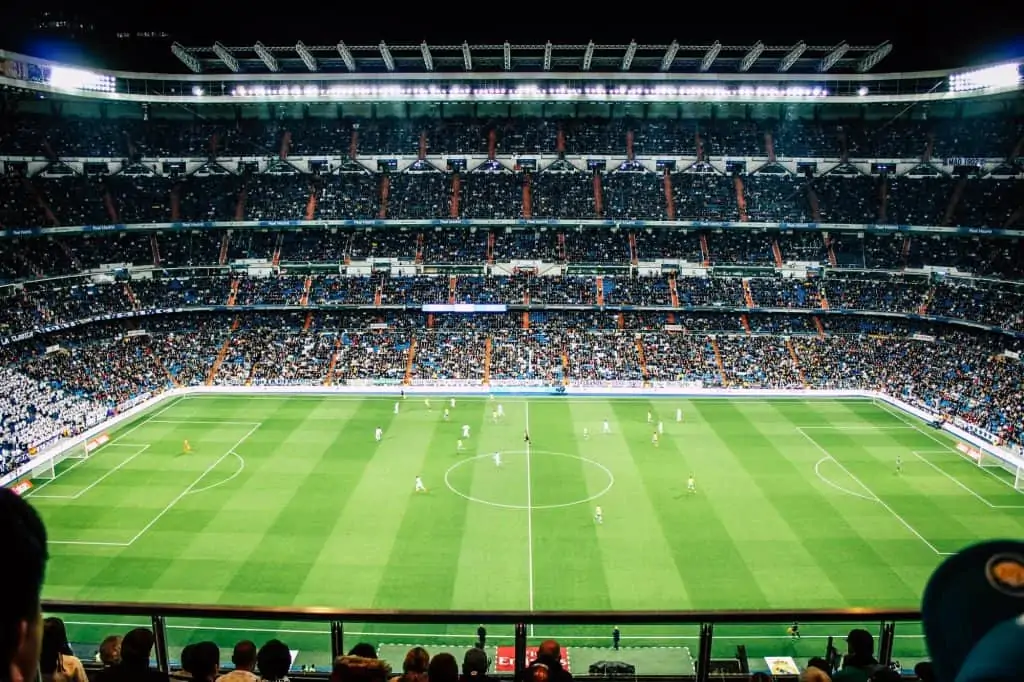Share the post "Cost to Build a Grass Soccer Field (Natural Vs. Artificial)"
Building a soccer field is an expensive and time-consuming project. The prices vary depending on the type of grass and region.
Synthetic or artificial turf is the most commonly used type of grass not only for soccer fields but also for hockey, lacrosse, baseball, and football fields. This article discussed the cost of building both artificial turf fields and natural grass fields in detail.
If you’re planning to build a soccer field in your institution or for your community, then read this guide carefully till the very end.

How Much Does It Cost to Build a Grass Soccer Field?
Constructing a sports field appears to be a pipe dream, but it’s not actually as overwhelming as you might think.
The first step is to properly understand all the available options, and then you can start the process by choosing the type of grass that suits your needs and budget the best.
You can use the following information for both football and soccer fields. However, this article focuses on soccer fields, and the construction cost may vary depending on your sports field. The overall cost is divided into the following.
- Location
- Field size
- Schedule of construction
- Labor costs
- Irrigation system
- Amount of required site work
You might also need to consult with your local or state regulations that govern the construction process.

Cost for Artificial Turf
The upfront cost of artificial grass is a lot more than natural grass but it actually saves you money in the long run. According to the Sports Turf Managers Association, the cost ranges somewhere between 6 to 10.25 US dollars per square foot.
This cost includes everything from infill materials, irrigation, drainage, and labor costs to carpet, installation, base layer materials, and field excavation.
So, you should allocate a conservative price of 8 US dollars per square foot for a full-sized football or soccer field if you want to go with an artificial turf project.
Artificial grass provides a smooth, spongy, and level surface, and the installation process can take up to 3 months from start to end.
It’s important to note that modern artificial turfs mimic most qualities of natural grass and can be used at all game levels.

Cost According to Soccer field Dimensions
The dimensions of a typical field for a soccer game with the range found optimal by the Fédération Internationale de Football Association are:
- 70 to 80 yards in length
- 110 to 120 yards in width
However, the size also depends upon the field type. The following table explains the soccer field construction cost of different types of soccer fields.
| Type of Field | Total Area | Total Artificial Turf Cost |
| Junior High School | 49,500 square feet | 297,000 – 507375 |
| High School | 64,350 square feet | 386,100 – 659,587.5 |
| Women’s | 28,800 – 54,000 square feet | 172,800 – 295,200 / 324,000 – 553,500 |
| Men’s | 64,350 – 81,000 square feet | 386,100 – 659,587.5 / 486,000 – 830,250 |
Pros and Cons of Artificial Turf
Consistency and player safety are two of the most important features that soccer players need on a soccer field. A well-maintained modern artificial turf field offers a soft surface to minimize injuries in soccer players.
Soccer fields with Artificial Turf usually have high temperatures as compared to natural grass fields. However, it’s directly linked to the weather conditions.
It means if the climate is hot and sunny, the temperature of synthetic turf fields will be high.
The average temperature of soccer fields with synthetic turf ranges from 140 to 183 degrees Fahrenheit.
Cost for Natural Grass
When it comes to natural grass fields, there are different options available that you can choose from, and here’s a detailed breakdown of each type.
- If you opt for the best type of natural grass field which comes with a sand rootzone, then it’ll cost you 5 to 8 US dollars per square foot.
- The natural grass field construction with a sand cap will cost you somewhere between 2.75 to 4 US dollars.
- Using native soil (but not the one present on-site) will cost you 1.5 to 3 US dollars per square foot.
- If you’re planning to use native soil of the site, then the natural grass field construction will cost you 0.60 to 1.50 US dollars per square foot.
The cost breakdown mentioned above includes all the operations needed to build natural grass fields, including labor costs, installation process, rootzone type, and grading.

Pros and Cons of Natural Grass
One of the best benefits of natural grass (for places with hot weather) is that it works as a temperature reducer. It allows players to run comfortably even in hot weather, and the temperature of the natural grass field rarely goes above 100 degrees Fahrenheit.
On the downside, natural grass costs more money on maintenance every year than artificial turf.
Maintenance Costs
The entire field in a soccer game, unlike other athletic fields, is used heavily. That’s why it also comes with a high maintenance cost whether you’re using artificial turf or natural grass.
Artificial Turf Maintenance Cost
Many people believe that artificial or synthetic turf fields don’t require maintenance, so you don’t need to spend money for that purpose. It’s not true at all because synthetic fields cost money for the following purposes.
- Removing the accumulation of organic matter
- Repainting lines
- Drainage maintenance and repair
- Spraying equipment to minimize odors and static cling
- Chemical disinfectants
- Irrigation to maintain temperature
- Additional infill
It’s true that synthetic fields cost you less money for maintenance as compared to natural turfgrass fields, but they aren’t maintenance-free.
An average artificial soccer field can cost you around 7,000 to 10,000 US dollars per year, along with 300 to 500 labor hours.
If the soccer turf fields are used for multiple sports, then the average maintenance cost per year will be high.

Natural Grass Maintenance Cost
The maintenance cost of a soccer field with natural grass is more than a turf football field but not a significant margin. The maintenance cost varied depending upon multiple variables such as:
- Location
- Climate
- Hours of use
- Type of grass
- Rootzone type
It isn’t easy to estimate the annual maintenance cost of a natural grass soccer field. However, the average cost can range from 10,000 US dollars to 30,000 US dollars per year due to high materials costs.
Duke University, at the college level, roughly spends about 25,000 US dollars on its sports field based on sand, and it requires about 500 hours of labor.
On the other hand, a football field based on native soil located in Southern Carolina spends about 9,000 US dollars to 13,000 US dollars on yearly maintenance.
Other Costs Involved in the Construction of a Soccer Field
While allocating your budget for natural grass or an artificial turf project, you must consider all the factors that go around and under the pitch.
For example, if you’re planning to replace your existing artificial surface, then you’ll need to consider the amount of material that can be reused. Several layers, such as steel building and structural supports, gravel, and sand, are placed between the solid ground and artificial turf.
The construction process for a new soccer field will start with excavations of the current ground. Then the supporting layers will be added after the grading process. Climate and the quality of the soil will also affect your budget.
Soccer fields must also have enough space around the boundary lines for corner kicks, throw-in officials, substitutes, and players to run. Other than that, you’ll also need to spend additional costs on adequate lighting for the entire playing surface for night games.
Share the post "Cost to Build a Grass Soccer Field (Natural Vs. Artificial)"
Joel is a seasoned soccer journalist and analyst with many years of experience in the field. Joel specializes in game analysis, player profiles, transfer news, and has a keen eye for the tactical nuances of the game. He played at various levels in the game and coached teams - he is happy to share his insight with you.



